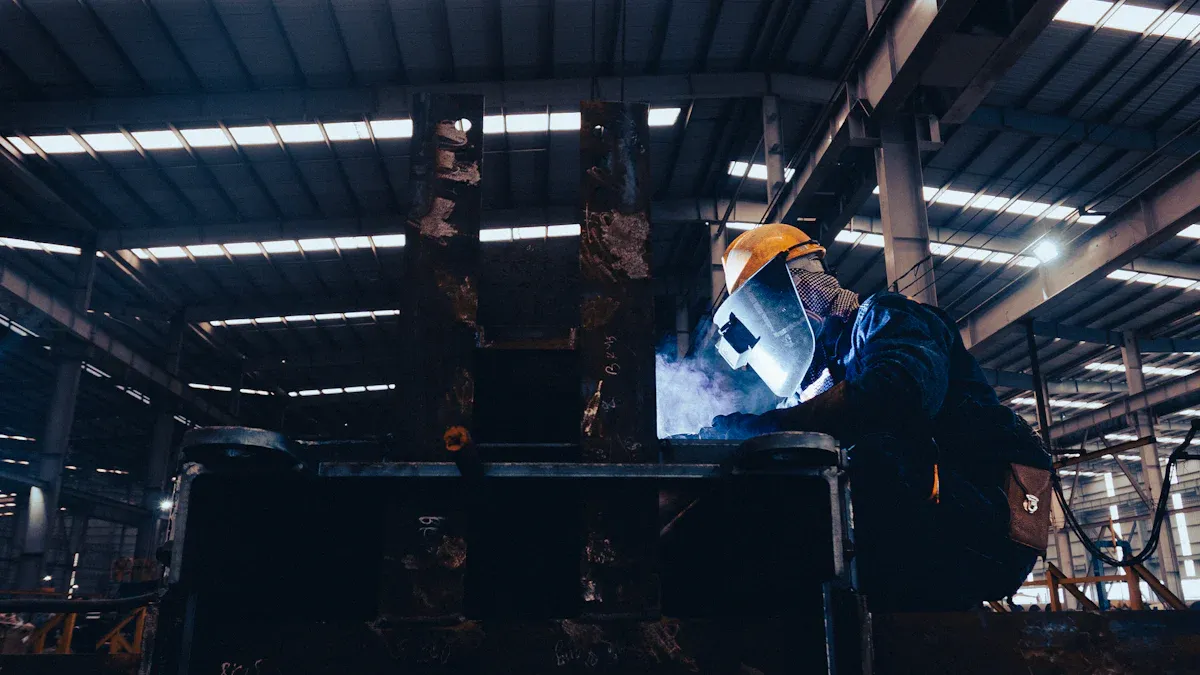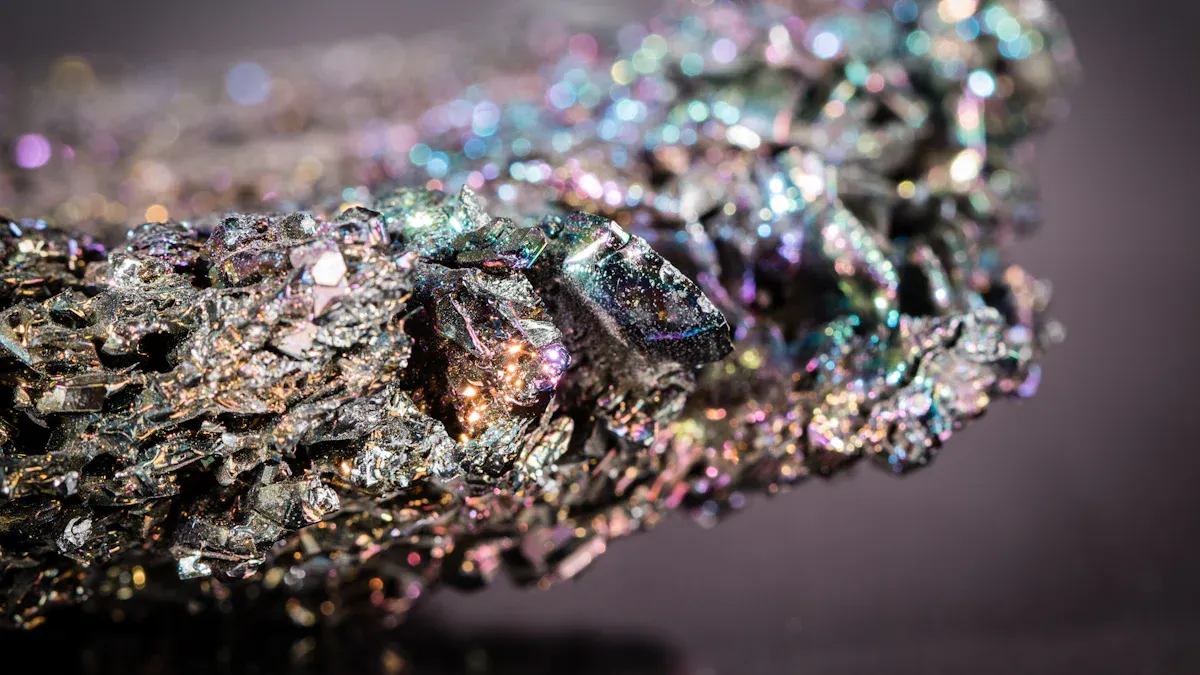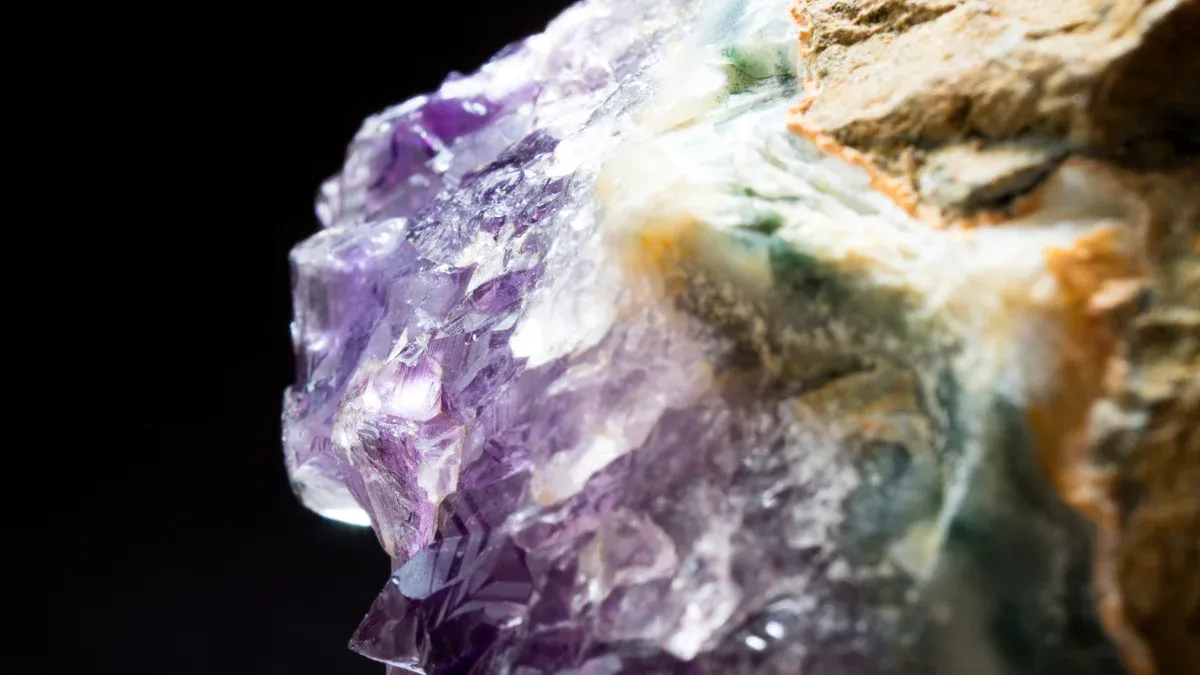
Silicon carbide coating acts as a powerful shield for graphite. It protects the material from wear caused by mechanical abrasion, extreme heat, and chemical reactions. This coating’s extraordinary hardness reduces surface damage, even in demanding environments. When applied, it enhances the durability of graphite, allowing it to perform better under stress. You might wonder, what is graphite coating, and why is silicon carbide so effective? Its unique properties, including thermal stability and resistance to corrosion, make it invaluable in industries like epitaxy semiconductor manufacturing. Silica carbide’s role in preserving graphite ensures longer-lasting performance and reliability.
Key Takeaways
- Silicon carbide coating shields graphite from damage caused by heat and chemicals.
- Its strong surface stops scratches and tiny wear, making graphite last longer.
- The coating lowers friction, helping machines work better and need less fixing.
- It handles very high heat and stops heat damage, perfect for tough jobs.
- Silicon carbide resists chemicals well, keeping graphite safe in harsh conditions.
Mechanical Protection with Silicon Carbide Coating

Hardness and Abrasion Resistance
Silicon carbide coating provides exceptional hardness, making it one of the toughest materials available for protecting graphite. Its hardness acts as a shield against scratches and dents caused by mechanical forces. When graphite surfaces face constant contact with abrasive materials, they wear down quickly. You can rely on silicon carbide coating to prevent this damage.
Tip: Hardness is measured using the Mohs scale, and silicon carbide ranks near the top, ensuring superior protection for graphite in high-wear environments.
This coating also resists micro-abrasions, which are tiny scratches that weaken graphite over time. By applying silicon carbide, you extend the lifespan of graphite components and reduce the need for frequent replacements.
Reducing Friction-Induced Wear
Friction is a major cause of wear in graphite, especially in applications involving moving parts. Silicon carbide coating reduces friction by creating a smooth, durable surface. This minimizes the energy lost during movement and prevents the material from breaking down.
You’ll notice that coated graphite performs better in systems with sliding or rotating components. The coating reduces heat buildup caused by friction, which further protects the graphite from damage.
- Beneficios de la fricción reducida:
- Improved efficiency in mechanical systems.
- Lower maintenance costs due to less wear.
- Enhanced reliability in critical applications.
Minimizing Surface Erosion in High-Stress Conditions
Graphite often faces high-stress conditions, such as intense pressure or impact. These forces can erode its surface, leading to reduced performance. Silicon carbide coating prevents surface erosion by acting as a barrier. It absorbs the stress and distributes it evenly, keeping the graphite intact.
In environments like manufacturing or aerospace, where materials endure constant stress, this coating ensures graphite remains functional. You can depend on silicon carbide-coated graphite to maintain its structural integrity even under extreme conditions.
Note: Surface erosion not only weakens graphite but also affects the precision of components. Silicon carbide coating preserves both strength and accuracy.
Thermal Stability of Silicon Carbide Coating
High Thermal Conductivity and Heat Resistance
Silicon carbide coating excels in managing heat. Its high thermal conductivity allows it to transfer heat efficiently, preventing hotspots on graphite surfaces. This property ensures that the material remains stable even when exposed to rapid temperature changes. You can rely on this coating to maintain its structure and performance in environments where other materials might fail.
The heat resistance of silicon carbide coating is equally impressive. It withstands temperatures exceeding 2,000°F without breaking down. This makes it an ideal choice for applications where extreme heat is unavoidable. Whether you’re working in industrial furnaces or high-temperature reactors, this coating ensures graphite components stay intact.
Tip: Materials with high thermal conductivity reduce the risk of thermal stress, which can cause cracking or warping over time.
Preventing Thermal Degradation of Graphite
Graphite, while versatile, can degrade when exposed to prolonged heat. Silicon carbide coating acts as a protective barrier, shielding the graphite from thermal damage. It prevents oxidation, which often accelerates wear in high-temperature environments.
By applying this coating, you ensure that the graphite retains its mechanical properties. This is especially important in industries like aerospace, where material failure is not an option. The coating also reduces the need for frequent replacements, saving you time and resources.
Applications in Extreme Temperature Environments
Silicon carbide-coated graphite thrives in extreme temperature settings. In semiconductor manufacturing, it handles the intense heat of chemical vapor deposition processes. In aerospace, it protects components exposed to the frictional heat of high-speed travel.
You’ll also find this coating in energy production, where it enhances the durability of graphite used in nuclear reactors and solar power systems. Its ability to perform under such conditions makes it indispensable across various industries.
Note: The versatility of silicon carbide coating ensures that graphite can meet the demands of cutting-edge technologies.
Chemical Resistance of Silicon Carbide Coating
Shielding Graphite from Oxidation
Graphite is highly susceptible to oxidation, especially at elevated temperatures. When exposed to oxygen, its surface reacts and forms carbon dioxide or carbon monoxide, which weakens the material. Silicon carbide coating acts as a protective barrier, preventing oxygen from reaching the graphite. This coating creates a dense, impermeable layer that blocks oxidation, even in high-temperature environments.
You can rely on this coating to maintain the structural integrity of graphite in applications where oxidation is a constant threat. For example, in industrial furnaces or chemical reactors, the coating ensures that graphite components last longer and perform reliably.
Tip: To maximize protection, ensure the silicon carbide coating is applied evenly across all exposed surfaces of the graphite.
Protection Against Acidic and Corrosive Substances
Graphite often encounters harsh chemicals in industrial processes. Acids, alkalis, and other corrosive substances can degrade its surface over time. Silicon carbide coating provides excellent chemical resistance, shielding graphite from these aggressive agents. Its inert nature prevents chemical reactions that could compromise the material.
In environments like chemical processing plants, you’ll notice that coated graphite withstands exposure to corrosive substances far better than uncoated materials. This protection reduces the risk of failure and extends the lifespan of critical components.
- Key advantages of chemical resistance:
- Improved safety in handling corrosive materials.
- Reduced maintenance and replacement costs.
- Enhanced performance in chemically demanding applications.
Enhancing Longevity in Harsh Chemical Processes
Industries like energy production and semiconductor manufacturing often subject graphite to extreme chemical conditions. Without protection, the material deteriorates quickly, leading to frequent replacements and downtime. Silicon carbide coating enhances the longevity of graphite by providing a robust shield against chemical wear.
You’ll find this coating particularly valuable in processes involving high-purity chemicals, where contamination must be avoided. Its non-reactive surface ensures that the graphite remains stable and performs consistently. By using silicon carbide-coated graphite, you can achieve greater efficiency and reliability in your operations.
Note: The durability of silicon carbide coating makes it a cost-effective solution for industries that demand long-lasting materials.
Industrial Applications of Silicon Carbide-Coated Graphite

Semiconductor Manufacturing and MOCVD Processes
In semiconductor manufacturing, precision and durability are critical. You’ll find silicon carbide-coated graphite playing a vital role in processes like Metal-Organic Chemical Vapor Deposition (MOCVD). This process requires materials that can withstand extreme heat and corrosive gases. The coating protects graphite components, ensuring they remain stable and contamination-free.
For example, in wafer production, the coating prevents oxidation and wear, which could compromise the quality of the final product. Its thermal stability also ensures consistent performance during rapid heating and cooling cycles. By using silicon carbide-coated graphite, you can achieve higher yields and reduce downtime in semiconductor fabrication.
Tip: Regular maintenance of coated components can further extend their lifespan in high-precision environments.
Aerospace and Defense Applications
The aerospace and defense industries demand materials that can endure harsh conditions. Silicon carbide-coated graphite excels in these applications due to its strength and resistance to extreme temperatures. You’ll see it used in rocket nozzles, heat shields, and other components exposed to intense heat and mechanical stress.
The coating’s ability to resist oxidation ensures that these parts remain reliable during high-speed travel or re-entry into the atmosphere. Its lightweight nature also makes it ideal for aerospace designs where reducing weight is crucial. By incorporating this material, you can enhance the performance and safety of aerospace systems.
Energy and Industrial Manufacturing Uses
In energy production, silicon carbide-coated graphite proves invaluable. It’s commonly used in nuclear reactors, where it protects graphite moderators from chemical and thermal degradation. You’ll also find it in solar power systems, where it enhances the durability of components exposed to high temperatures.
In industrial manufacturing, the coating improves the lifespan of graphite molds and dies. These tools often face wear from repeated use and exposure to molten metals. The coating minimizes damage, ensuring consistent performance over time. By choosing silicon carbide-coated graphite, you can reduce maintenance costs and improve operational efficiency.
Note: The versatility of this coating makes it a cost-effective solution for industries requiring durable materials.
Silicon carbide coating transforms graphite into a more durable and reliable material. It protects against wear, heat, and chemical damage, ensuring long-lasting performance in demanding environments. You can depend on this coating to enhance operational efficiency while reducing maintenance costs. Its versatility makes it essential for industries like aerospace, energy, and semiconductor manufacturing. By choosing silicon carbide coating, you ensure that graphite components meet the highest standards of durability and reliability.
FAQ
What makes silicon carbide coating so effective for protecting graphite?
Silicon carbide coating offers exceptional hardness, thermal stability, and chemical resistance. These properties shield graphite from wear, heat, and corrosion. You can rely on it to extend the lifespan of graphite components in demanding environments.
Tip: Its high performance comes from its dense, impermeable structure, which acts as a robust barrier.
Can silicon carbide-coated graphite handle extreme temperatures?
Yes, it withstands temperatures over 2,000°F without degrading. Its high thermal conductivity prevents hotspots and thermal stress. You’ll find it ideal for applications like industrial furnaces, aerospace systems, and semiconductor manufacturing.
Is silicon carbide coating resistant to chemical damage?
Absolutely! Silicon carbide coating resists acids, alkalis, and other corrosive substances. It protects graphite from chemical reactions that weaken its structure. This makes it perfect for industries like chemical processing and energy production.
- Key Benefit: Enhanced durability in harsh chemical environments.
How does silicon carbide coating improve operational efficiency?
By reducing wear, oxidation, and thermal damage, silicon carbide coating minimizes maintenance needs. You’ll experience fewer replacements and less downtime. This leads to cost savings and improved productivity in industries requiring durable materials.
Where is silicon carbide-coated graphite commonly used?
You’ll find it in semiconductor manufacturing, aerospace, energy production, and industrial tooling. Its versatility makes it essential for processes involving high heat, mechanical stress, or corrosive chemicals.
Note: Its widespread use highlights its reliability and value across industries.
| Contact Us To Get Better Information |
| By:semicera |
| Address : No. 1958 Jiangnan Road, Ningbo High tech Zone, Zhejiang Province, 315201, China |
| E-mail : sales01@semi-cera.com |
| E-mail : sales05@semi-cera.com |
| Tel : 86-0574-8650 3783 |
| Phone : 86-13373889683 |
| Skype : xianeryeah@outlook.com |
| Whatsapp : 86-13373889683 |
| Xing:https://www.xing.com/discover/your-posts |
| Pinterest:https://www.pinterest.com/Semicera/ |
| Facebook:https://www.facebook.com/profile.php?id=61575124466678 |
| Youtube:https://www.youtube.com/@Semicera |


